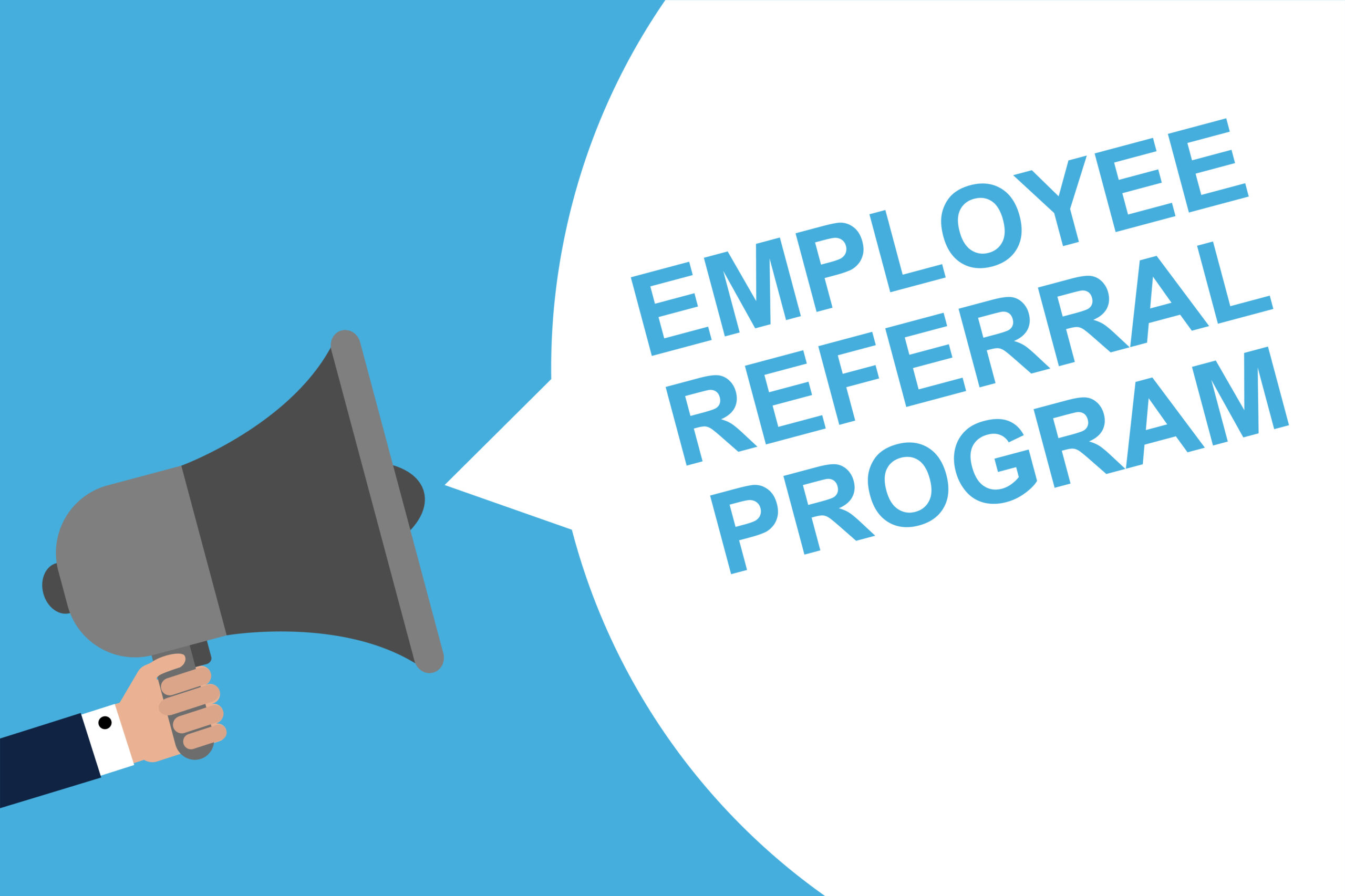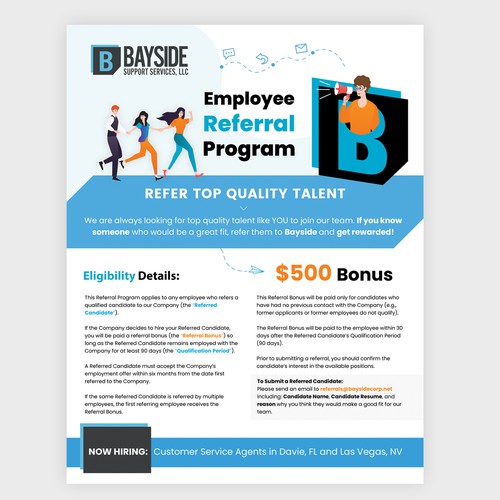Introduction: Employee Referral Programs
Employee Referral Programs have long been recognized as a valuable source of high-quality talent for organizations. These programs leverage the existing networks of employees to identify and attract potential candidates who are more likely to be a good fit for the company culture. However, with the advent of technology, Employee Referral Programs have been supercharged, revolutionizing the way companies find and hire top talent.
Introduction – Employee Referral Programs
In today’s highly competitive job market, organizations are constantly seeking innovative ways to attract and retain top talent. Employee referral programs have emerged as a powerful tool for talent acquisition, and when combined with technology, they become even more potent. By leveraging technology, companies can significantly enhance the effectiveness and efficiency of their employee referral programs.
Employee Referral Meaning

Employee referral is a recruiting strategy that relies on current employees to identify and recommend qualified candidates for open positions within the company. This strategy can be an effective way to find top talent, as current employees are more likely to know people who are a good fit for the company culture and values.
There are two main types of employee referral programs:
- Closed referral programs: These programs are only open to current employees, and they typically offer a monetary reward for successful referrals.
- Open referral programs: These programs are open to anyone, including current employees, former employees, and even customers. Open referral programs typically do not offer monetary rewards, but they can still be an effective way to find qualified candidates.
There are many benefits to using employee referral programs, including:
- Increased candidate pool: Employee referral programs can help you to reach a wider pool of candidates, as current employees are more likely to know people who are not actively looking for jobs.
- Higher quality candidates: Current employees are more likely to know people who are a good fit for the company culture and values.
- Reduced recruiting costs: Employee referral programs can help you to save money on recruiting costs, as you do not have to pay a recruiter to find candidates.
- Increased employee morale: Employee referral programs can help to increase employee morale, as employees feel like they are being valued and that their contributions are appreciated.
If you are considering using an employee referral program, there are a few things you need to do to make sure it is successful:
- Make it easy for employees to refer candidates: The referral process should be easy and straightforward for employees. You should provide employees with a simple way to submit referrals, and you should make sure that they are aware of the rewards that are available for successful referrals.
- Offer competitive rewards: The rewards offered for successful referrals should be competitive enough to motivate employees to refer candidates. The rewards can be monetary, but they can also be non-monetary, such as extra vacation days or tickets to a sporting event.
- Track the results of your program: It is important to track the results of your employee referral program so that you can see how effective it is. You should track the number of referrals that are submitted, the number of candidates that are hired, and the cost per hire.
Employee referral programs can be a valuable tool for finding top talent. If you are looking for a way to improve your recruiting process, an employee referral program may be the right solution for you.
Employee Referral Example

Here is an example of an employee referral:
- Employee: John Doe, a software engineer at Google, is looking to refer a friend for a software engineering position at Google.
- John: John knows that his friend, Mary Smith, is a talented software engineer who is looking for a new job. He believes that Mary would be a good fit for the company culture and values, and he thinks that she would be a valuable asset to the team.
- John: John submits a referral for Mary, and provides her contact information and a brief summary of her qualifications.
- Google: Google reviews John’s referral and decides to reach out to Mary to schedule an interview.
- Mary: Mary is contacted by Google and schedules an interview. She is subsequently hired for the position.
- John: John receives a reward for his successful referral.
This is just one example of how an employee referral program can work. The specific process and rewards will vary from company to company.
Here are some additional details about the example above:
- The employee referral program: Google’s employee referral program offers a monetary reward of $5,000 for successful referrals. The reward is paid out once the referred candidate has been employed by Google for at least 90 days.
- The qualifications of the candidate: Mary is a talented software engineer with a strong track record of success. She has a bachelor’s degree in computer science from a top university, and she has several years of experience working in the software industry.
- The interview process: Mary’s interview process consisted of two rounds: a phone interview and an in-person interview. During the phone interview, she was asked about her skills and experience. During the in-person interview, she was asked more in-depth questions about her skills and experience, as well as her fit for the company culture and values.
- The reward for the employee: John received a reward of $5,000 for his successful referral. The reward was paid out once Mary had been employed by Google for at least 90 days.
Employee Referral Program Flyer
Employee Referral Program
Refer your friends and earn rewards!
We are looking for talented individuals to join our team. If you know someone who would be a good fit for our company, please refer them to us. We offer a monetary reward for successful referrals.
How it works:
- Simply fill out the referral form online or in person.
- Provide us with the candidate’s contact information and a brief summary of their qualifications.
- If the candidate is hired, you will receive a reward.
Rewards:
- $5,000 for a full-time hire
- $2,500 for a contract hire
Eligibility:
- Must be a current employee of the company
- The candidate must be a new hire
- The candidate must be employed by the company for at least 90 days
Terms and conditions:
- The reward will be paid out in the form of a bonus
- The reward is non-transferable
- The company reserves the right to modify or terminate the program at any time
Refer your friends today and help us build a stronger team
Understanding Employee Referral Programs
Employee referral programs involve encouraging employees to refer qualified candidates for open positions within the company. These programs offer a win-win situation for both employees and employers. Employees are motivated to refer candidates from their personal and professional networks, while employers benefit from access to a broader talent pool and higher chances of finding the right fit for their organization.
Research shows that referred candidates are more likely to be hired, perform better, and stay longer in their roles compared to candidates from other sources. In fact, according to a study conducted by Jobvite, employee referrals account for only 7% of applicants but contribute to 40% of all new hires.
Challenges Faced by Traditional Referral Programs
Traditional employee referral programs have their limitations. They often suffer from limited reach and scope, as they heavily rely on employees’ personal networks. Additionally, tracking and managing referrals manually can be time-consuming and prone to errors. These challenges restrict the program’s potential and effectiveness.
Technology-Driven Solutions for Employee Referral Programs
Technology has provided solutions to overcome the challenges faced by traditional referral programs. Referral management software, for instance, streamlines the referral process by automating candidate tracking, communication, and rewards. Such software enables HR departments to efficiently manage and evaluate referrals, ensuring that no qualified candidates fall through the cracks.
Furthermore, integrating employee referral programs with social media platforms amplifies their reach and visibility. Employees can easily share job openings with their networks, increasing the chances of finding suitable candidates who may not be directly connected to the company. This integration also enhances employee engagement and encourages participation.
Advantages of Technology-Enabled Employee Referral Programs
By embracing technology, companies can unlock numerous advantages that supercharge their employee referral programs. Firstly, technology allows organizations to tap into a larger talent pool. With social media integration, job openings can reach a wider audience beyond the immediate network of employees, attracting diverse and highly skilled candidates.
Secondly, technology offers improved tracking and analytics capabilities. HR departments can monitor the progress of referrals, measure the effectiveness of the program, and make data-driven decisions to optimize outcomes. This data-driven approach enables organizations to continuously improve their referral programs and ensure they align with their talent acquisition strategies.
Lastly, technology-driven employee referral programs foster increased engagement and participation. With gamification elements, employees are motivated to actively participate in the referral process. Leaderboards, rewards, and recognition create a sense of competition and fun, making the program more engaging and enjoyable for employees.
Best Practices for Implementing Technology-Driven Referral Programs
To maximize the benefits of technology-enabled employee referral programs, organizations should follow best practices. Clear program guidelines and incentives are crucial to ensure employees understand the program’s objectives and are motivated to actively participate. Additionally, seamless integration with existing HR systems streamlines the referral process and minimizes administrative burden.
Communication and promotion strategies are also vital for program success. Regularly updating employees on job openings and program updates through multiple channels, such as emails, internal newsletters, and company-wide meetings, keeps the program top of mind and encourages participation.
Real-Life Examples of Successful Employee Referral Programs
Several companies have successfully implemented technology-driven employee referral programs. Company A, for instance, saw a significant increase in referral rates after implementing referral management software. The software streamlined the process and provided real-time updates to employees, resulting in a more efficient and effective referral program.
Company B took a creative approach by incorporating gamification elements into their employee referral program. By introducing leaderboards, points, and rewards, they boosted employee engagement and participation. The program became a topic of discussion among employees, generating healthy competition and enthusiasm.
Overcoming Potential Challenges
While technology-enhanced employee referral programs offer numerous benefits, they can face challenges. Employee skepticism and resistance may arise, as some employees may perceive favoritism or unfairness in the referral process. To address this, organizations must ensure transparency and fairness by establishing clear criteria, implementing checks and balances, and communicating the program’s guidelines effectively.
Measuring and Evaluating Program Success
Measuring the success of a technology-driven employee referral program is essential to gauge its effectiveness. Key metrics to track include the number of referrals, the quality of referrals, conversion rates, and the time-to-hire for referred candidates. Continual evaluation and optimization of the program based on these metrics ensure ongoing success and improvement.
Conclusion
Technology has revolutionized employee referral programs, enabling companies to tap into their employees’ networks effectively. By leveraging technology, organizations can expand their talent pool, track and measure program success, and foster greater employee engagement. Technology-enabled employee referral programs have become a game-changer in the talent acquisition landscape, offering a competitive edge in attracting top talent.
Frequently Asked Questions (FAQs)
Q1. How do employee referral programs benefit companies?
Employee referral programs provide a cost-effective, efficient, and reliable way for companies to attract top talent, improve retention rates, and foster a positive work culture. By leveraging their own employees’ connections, organizations can tap into a network of trusted individuals who can contribute significantly to the company’s success.
Q2. What are the challenges faced by traditional employee referral programs?
The challenges faced by traditional employee referral programs include limited reach, manual tracking processes, and low employee engagement and participation. Overcoming these challenges requires implementing technology-driven solutions, improving communication and promotion strategies, and ensuring fairness and diversity in the program.
Q3. How does technology enhance employee referral programs?
Technology enhances employee referral programs by expanding their reach, automating tracking and management processes, and increasing employee engagement through gamification elements and social media integration.
Q4. What are the advantages of technology-enabled employee referral programs?
Technology-enabled employee referral programs offer advantages such as expanded reach to a wider talent pool, improved tracking and analytics for program effectiveness, and increased employee engagement through gamification and social media integration.
Q4. How can companies measure the success of their employee referral programs?
Companies can measure the success of their employee referral programs by tracking key metrics such as the number and quality of referrals, conversion rates, and time-to-hire for referred candidates. Continual evaluation and optimization based on these metrics ensure ongoing success and improvement in the program.




1 thought on “Employee Referral Programs 2023”